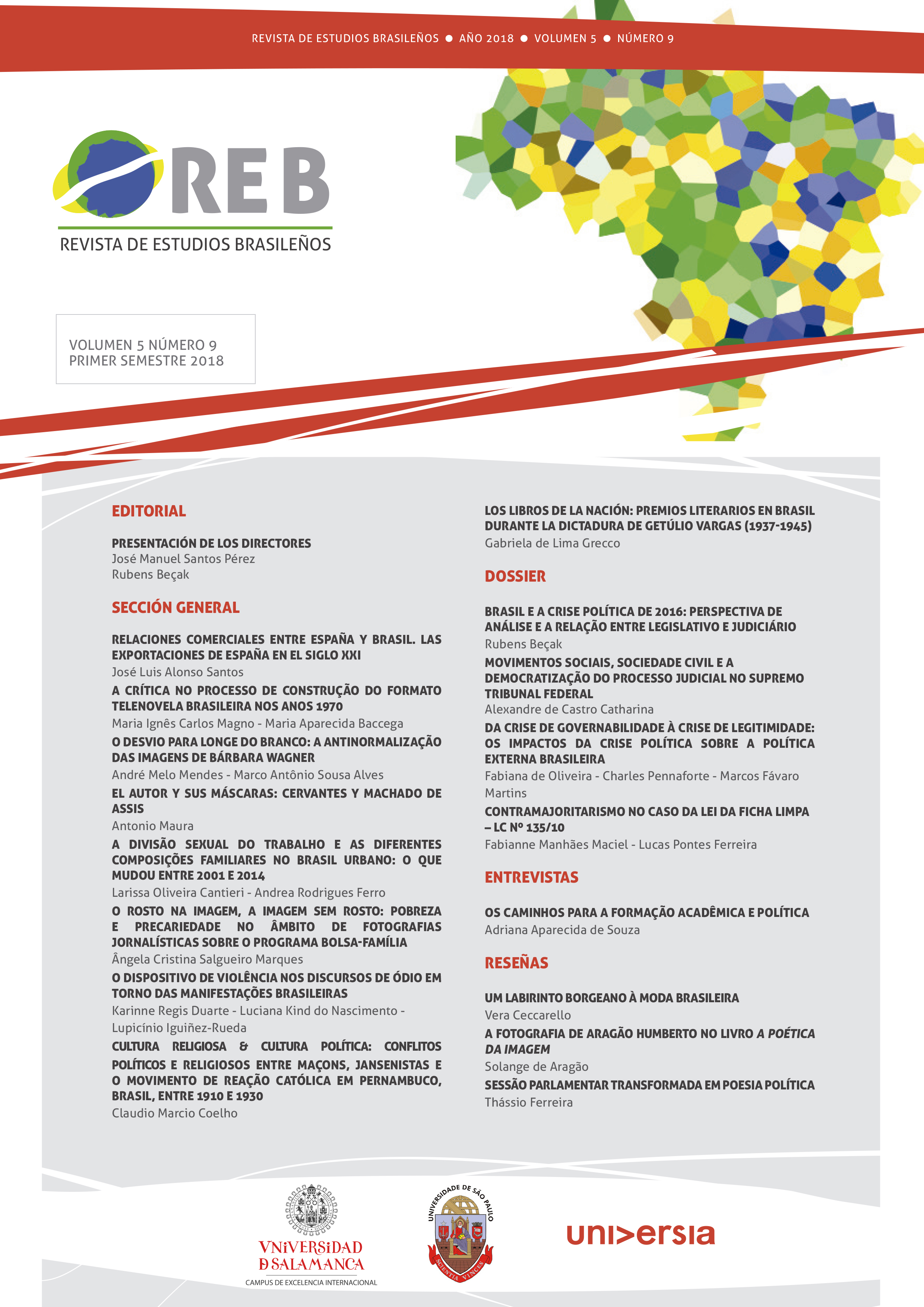The face in the image, the image without face: poverty and precarity in journalistic photography about Bolsa-Família Program
DOI:
https://doi.org/10.3232/REB.2018.V5.N9.3445Keywords:
Precarity, face, photojournalistic image, aesthetics, politics.Abstract
The aim of this paper is to produce an analysis grounded on the notion of face understood as a vocalization of an agony and of an ethical demand made by the Other, giving birth to a responsibility relationship. Such concept, derived from the thought of Lévinas and reworked by Butler, is used here to guide the analysis of specific photojournalistic images related to the Bolsa-Família Program. The corpus of the research has a total of 120 images, assembled between 2003 and 2015 from newspapers of large national distribution, such as Folha de São Paulo, Estado de São Paulo and O Globo. In order to investigate the political and ethical dimensions of these images, they were grouped into two main axes of signification: a) faceless images: the face cannot make its appearance even if human face is portrayed in them; b) the face in the image / the face of the image: in them the face appears as appealing, a call that is addressed to us and make us aware of the precariousness and vulnerability of our lives. We conclude from these two groups of images that the face speaks and requires to be listened, it is a vocalization of a suffering, of a moan and of a demand that creates intersections between aesthetics and politics from the way images intervenes in the framing construction of ethical relations with alterity.





